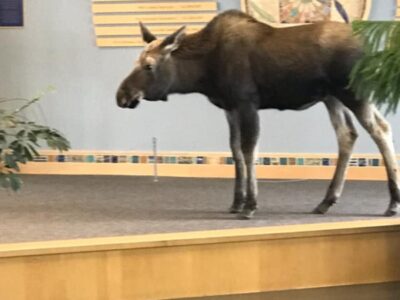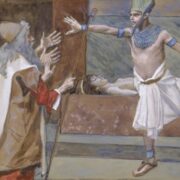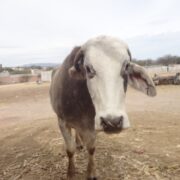
Grigory Kessel, a medievalist from the Austrian Academy of Sciences, was using ultraviolet photography to study the Syriac translation of the Bible’s Matthew chapters 11 and 12 in an ancient manuscript. When he looked at the results, he couldn’t believe what he was reading.
He stumbled upon a hidden chapter of the Bible.
It appears that Kessel “found a hidden version of a Bible passage that was left undiscovered for more than 1,500 years underneath a previously discovered section using ultraviolet lights,” according to Fox News.
He “said that they found an ancient version of Chapter 12 in the book of Matthew in the Bible that had been hidden beneath a section of text for over 1,500 years. His discovery is one of the earliest translations of the Gospels, first created in the 3rd century and copied in the 6th century.
Kessel shared that he used ultraviolet photography to see the earlier text under three layers of words written on a palimpsest, an ancient manuscript previously written on that people have scraped off and reused multiple times.”
In a statement, the researcher said, “About 1,300 years ago a scribe in Palestine took a book of the Gospels inscribed with a Syriac text and erased it. Parchment was scarce in the desert in the Middle Ages, so manuscripts were often erased and reused.
‘The tradition of Syriac Christianity knows several translations of the Old and New Testaments,’ says medievalist Grigory Kessel. ‘Until recently, only two manuscripts were known to contain the Old Syriac translation of the gospels.’ While one of these is now kept in the British Library in London, another was discovered as a palimpsest in St. Catherine’s Monastery at Mount Sinai. The fragments from the third manuscript were recently identified in the course of the ‘Sinai Palimpsests Project.’
The small manuscript fragment, which can now be considered as the fourth textual witness, was identified by Grigory Kessel using ultraviolet photography as the third layer of text, i.e., double palimpsest, in the Vatican Library manuscript. The fragment is so far the only known remnant of the fourth manuscript that attests to the Old Syriac version—and offers a unique gateway to the very early phase in the history of the textual transmission of the Gospels.
For example, while the original Greek of Matthew chapter 12, verse 1 says, ‘At that time Jesus went through the grainfields on the Sabbath; and his disciples became hungry and began to pick the heads of grain and eat,’ the Syriac translation says, ‘[…] began to pick the heads of grain, rub them in their hands, and eat them.’
Claudia Rapp, director of the Institute for Medieval Research at the OeAW, says, ‘Grigory Kessel has made a great discovery thanks to his profound knowledge of old Syriac texts and script characteristics.’ The Syriac translation was written at least a century before the oldest Greek manuscripts that have survived, including the Codex Sinaiticus. The earliest surviving manuscripts with this Syriac translation date from the 6th century and are preserved in the erased layers, so-called palimpsests, of newly written parchment leaves.”
Kessel’s incredible discovery comes on the heels of an announcement that one of the oldest surviving biblical manuscripts, a nearly complete 1,100-year-old Hebrew Bible, will be sold at auction soon.
“Experts at auction house Sotheby’s in New York estimate it will fetch between $30 million and $50 million.
It could become the most expensive historical document ever sold at auction if the winning bid exceeds the $43.2 million paid for a first-edition copy of the Constitution of the United States,” The Daily Mail wrote.
[Read More: They Thought About Kicking Him Out Of The Store, But Then He Sat Down At The Piano]









